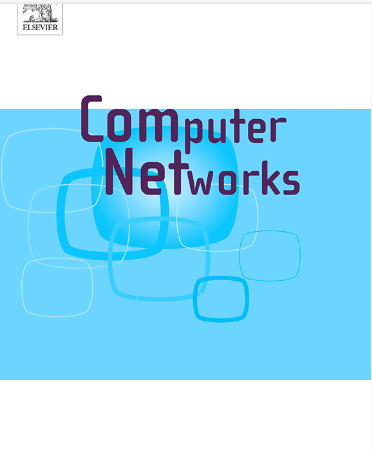社交物联网自适应信任管理新方法
IF 4.4
2区 计算机科学
Q1 COMPUTER SCIENCE, HARDWARE & ARCHITECTURE
引用次数: 0
摘要
社会物联网(SIoT)的出现代表了传统物联网(IoT)范式的重大演变。虽然早期的物联网系统优先考虑智能设备的集成,但SIoT范式将重点转向实现连接实体之间的社交互动和协作。在SIoT中,各个节点可以自主地建立社会连接以访问所需的服务。鉴于这种开放环境的动态性和分散性,有效的信任管理变得至关重要。近年来,机器学习(ML)技术在增强SIoT生态系统中的信任计算方面取得了重大进展。然而,诸如可伸缩性、动态行为和设备资源限制等挑战仍然带来困难。本文介绍了SATM-SIoT,一种分散的自适应SIoT信任管理模型,集成了MAPE-K(监控、分析、计划、执行、知识)控制回路。该模型根据感知到的恶意行为调整阈值,有效识别恶意设备,增强了信任管理的自适应能力。为了解决资源限制并确保可扩展性,我们的模型将信任评估任务分配给雾节点,利用它们的分布式计算能力。我们利用机器学习技术,特别是多层感知器(MLP)来分析设备行为并评估可信度。联邦学习(FL)增强了本地机器学习模型,支持基于新数据的协作学习和增量更新,以适应SIoT的动态。SATM-SIoT的主要目标是提高整体可信度,准确检测恶意设备,同时解决与可伸缩性、动态行为和资源约束相关的挑战。我们在模拟SIoT网络上进行了实验来验证我们的模型。结果表明,SATM-SIoT能够有效识别SIoT网络中几乎所有的恶意设备。利用FL技术和MAPE-K环,成功率分别平均提高7%和9%。本文章由计算机程序翻译,如有差异,请以英文原文为准。
A new approach on self-adaptive trust management for social Internet of Things
The emergence of the Social Internet of Things (SIoT) represents a significant evolution of the traditional Internet of Things (IoT) paradigm. While earlier IoT systems prioritized the integration of intelligent devices, the SIoT paradigm shifts the focus toward enabling social interaction and collaboration among connected entities. Within the SIoT, various nodes can autonomously establish social connections to access the desired services. Given the dynamic and decentralized nature of this open environment, effective trust management becomes crucial. In recent years, machine learning (ML) techniques have made significant progress in enhancing trust computing within the SIoT ecosystem. However, challenges such as scalability, dynamic behavior, and device resource limitations continue to pose difficulties. This study introduces SATM-SIoT, a decentralized self-adaptive trust management model for SIoT that integrates the MAPE-K (Monitor, Analyze, Plan, Execute, Knowledge) control loop. By adjusting thresholds based on perceived hostile behavior, this model effectively identifies malicious devices, enhancing adaptivity in trust management. To address resource limitations and ensure scalability, our model assigns trust evaluation tasks to Fog nodes, leveraging their distributed computational power. We utilize ML techniques, specifically multi-layer perceptron (MLP), to analyze device behavior and assess trustworthiness. Federated learning (FL) enhances local ML models, enabling collaborative learning and incremental updates based on new data to adapt to the dynamics of SIoT. The primary goal of SATM-SIoT is to improve overall trustworthiness and accurately detect malicious devices while tackling challenges related to scalability, dynamic behavior, and resource constraints. We conducted experiments on a simulated SIoT network to validate our model. The results show that SATM-SIoT effectively identifies almost all malicious devices in a SIoT network. Utilizing the FL technique and MAPE-K loop led to an average increase in Success Rate of 7% and 9%, respectively.
求助全文
通过发布文献求助,成功后即可免费获取论文全文。
去求助
来源期刊

Computer Networks
工程技术-电信学
CiteScore
10.80
自引率
3.60%
发文量
434
审稿时长
8.6 months
期刊介绍:
Computer Networks is an international, archival journal providing a publication vehicle for complete coverage of all topics of interest to those involved in the computer communications networking area. The audience includes researchers, managers and operators of networks as well as designers and implementors. The Editorial Board will consider any material for publication that is of interest to those groups.
 求助内容:
求助内容: 应助结果提醒方式:
应助结果提醒方式:


